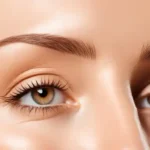Restore Your Hair on a Budget with These Little-Known Solutions
Published on
9 minute read

Finding affordable solutions to hair loss is something many people want. It’s easy to think that fixing hair loss must cost a lot. But, getting your hair to grow back or stop thinning can be done on a budget. You can take care of your hair better and use affordable growth methods.
This way, you improve your hair’s health without spending too much. Choosing budget-friendly hair care can make a big difference. It brings back confidence by making your hair look better.
Key Takeaways
- Finding hair restoration solutions within budget constraints is achievable.
- There are cost-effective methods for hair regrowth suitable for both men and women.
- Budget-friendly hair care doesn’t have to compromise on effectiveness.
- Nurturing hair health is possible with accessible and affordable practices.
- Combating hair loss encompasses both preventive measures and active restoration techniques.
Understanding the Reasons Behind Hair Loss
To find the right solutions, we must first know the causes of hair loss. Many times, it’s in our genes, leading to androgenetic alopecia or hereditary hair loss. This condition is the main reason many people look into hair restoration for men and hair restoration for women.
First, we need to pinpoint what’s causing the hair loss. It could be genetics, the environment, or our lifestyle. Finding the cause is key. It helps us find the right treatment. Understanding the cause is crucial in hair restoration plans. A list of common causes can show us the range and complexity of hair loss.
| Type of Hair Loss | Common Causes | Notes |
|---|---|---|
| Androgenetic Alopecia | Genetics, Hormones | Accounts for the majority of cases in both men and women. |
| Telogen Effluvium | Stress, Dietary Changes, Illness | Typically a temporary condition, often reversible. |
| Anagen Effluvium | Medical Treatments (e.g., Chemotherapy) | Hair loss usually ceases once treatment is completed. |
| Alopecia Areata | Autoimmune Disorders | Can cause random bald patches that may regrow over time. |
| Traction Alopecia | Hairstyles Pulling Tightly on Hair | Preventable; caused by mechanical stress on hair follicles. |
Knowing why hair is lost helps in choosing the right treatment. There are many hair restoration methods, from medicine to surgery. Knowing if the condition is temporary or permanent impacts the decision. Treatments for hair restoration for men and hair restoration for women start with understanding.
Consulting healthcare professionals, particularly dermatologists, can help in identifying the specific factors contributing to hair loss, which is a crucial step towards effective hair restoration.
Affordable Hair Restoration: Natural Remedies and Their Benefits
Looking into natural remedies for hair loss offers many advantages. These methods help restore hair without the steep costs of standard treatments. They’re budget-friendly and have fewer side effects, making them great for preventive care and as alternatives to hair restoration.

Coconut Oil: A Dual-Purpose Preventive and Moisturizer
Preventive care is essential in combating hair loss. Coconut oil is a top choice for this. It moisturizes well, helping to prevent hair breakage and keep the scalp healthy. With regular use, coconut oil can increase hair thickness over time.
Essential Oils for Scalp Health: Rosemary and Peppermint
Essential oils, like rosemary and peppermint, are excellent for the hair. Rosemary oil is great for natural hair regrowth and can work as well as some drugs. Peppermint oil boosts blood circulation in the scalp, which is good for hair growth.
Red Ginseng and Onion Juice: Uncommon Yet Effective
Red ginseng and onion juice are less common but powerful. They are great for hair care. Red ginseng improves strength and hair restoration. Onion juice, rich in nutrients, helps support the hair growth cycle.
Scalp Massages: Increasing Blood Flow for Hair Growth
Scalp massages are all about improving blood flow to the scalp. They can be done by hand or with tools. These massages support hair growth and are also very relaxing. They reduce stress, which is good for your mind and hair!
| Natural Remedy | Key Benefits | Usage Tips |
|---|---|---|
| Coconut Oil | Moisturizing, prevents breakage | Apply warm oil to scalp and hair, leave for at least 30 minutes before washing |
| Rosemary Oil | Promotes hair growth, may improve hair thickness | Mix with a carrier oil, apply to scalp, leave for at least 20 minutes before rinsing |
| Peppermint Oil | Stimulates scalp, increases circulation | Dilute with water or carrier oil, massage into scalp for 5-10 minutes, wash off thoroughly |
| Red Ginseng | Can improve hair strength and thickness | Take as a supplement as directed, or apply ginseng-infused products to the scalp |
| Onion Juice | Provides sulfur to strengthen hair, may support regrowth | Apply juice to the scalp, leave on for 15 minutes, rinse and shampoo thoroughly |
| Scalp Massages | Increases blood flow, may enhance growth | Use fingertips or massage tool to apply gentle but firm pressure in circular motions |
The Scientific Backing of Hair Regrowth Treatments
When we talk about treating hair loss, hair restoration research is key. It provides solid data and expert opinions. This research is crucial for knowing how well different treatments work. Treatments approved by the FDA are especially trusted because they go through thorough testing. This info highlights how science supports hair regrowth efforts.
There have been many studies proving some treatments for hair regrowth work well. Health care experts use this research to help patients pick the best treatment for growing back their hair.
| Treatment Type | Description | Success Rate* |
|---|---|---|
| Topical Minoxidil | An FDA-approved topical treatment widely used for hair regrowth | Approximately 60% |
| Finasteride | Oral medication known to prevent hair loss and promote hair growth | Up to 90% for mild to moderate hair loss |
| Low-Level Laser Therapy (LLLT) | A non-invasive treatment option using laser light to stimulate hair follicles | Varies, with many reporting positive results |
| Essential Oils | Natural remedies such as rosemary and peppermint oil applied to the scalp | Data is ongoing, with promising early results |
*Success rates are subjective and can vary based on individual cases and adherence to treatment protocols.
If you’re thinking about hair restoration, learning about the research can help. It makes you feel more sure about your choice. As new studies come out, it’s important to talk to health care pros. They know all about the latest research on how effective hair loss treatments are.
“FDA-approved hair loss treatments often serve as a beacon of hope for those struggling with hair loss, thanks to their substantiated ability to prevent further shedding and stimulate regrowth.”
Nurturing Hair Restoration with Diet and Lifestyle Choices
Starting your hair restoration journey means more than just using products and services. It also involves taking care of internal factors that affect hair health. Combining a diet focused on hair restoration nutrition with stress management can lead to stronger hair and prevent hair loss. It’s key to understand how much your diet and lifestyle can help your hair grow as part of your hair restoration plan.

Incorporating Nutrients for Hair Strength and Vitality
Eating the right foods can significantly improve your hair’s strength and vitality. Your diet should include a mix of vitamins for hair growth. These vitamins support healthy hair follicles, which is important for hair restoration.
| Nutrient | Sources | Benefits |
|---|---|---|
| Vitamin E | Almonds, spinach, sweet potatoes | Protects hair follicle cells from damage |
| Amino Acids | Chicken, eggs, quinoa | Builds keratin for stronger hair strands |
| B Vitamins | Whole grains, avocados, nuts | Supports energy metabolism in hair cells |
| Silica | Bananas, oatmeal, cucumbers | Improves hair elasticity and thickness |
Stress Management and Its Positive Effects on Hair
The link between stress and hair loss is well-known. A key part of hair restoration is managing stress well. Using stress reduction methods helps not just your overall health but also aids in hair loss prevention. Practices like meditation, exercise, or relaxation techniques create a healthier lifestyle. This, in turn, supports your hair restoration goals greatly.
Hair Restoration Technology: Innovations on a Budget
The landscape of hair restoration technology has changed a lot. Its goal is to offer affordable hair restoration solutions to many. Non-surgical methods are getting more popular. They’re cheaper and less invasive than surgery. Now, hair restoration clinics are using these new methods. They give hope to people who want hair growth without surgery.
New progress has led to many non-invasive hair treatments. These can be done in clinics or at home. These treatments help with hair growth. They also make hair healthier and thicker.
Today’s hair restoration clinics are more than just places for treatments. They are leaders in research and teach patients how to fight hair loss well and without spending too much.
Here’s a look at some promising and affordable hair restoration technologies. They are either available now or coming soon:
| Hair Restoration Technology | Approach | Cost Comparison | Accessibility |
|---|---|---|---|
| Low-Level Laser Therapy (LLLT) | Uses laser to stimulate hair follicles | More affordable than transplants | Available in clinics and as home devices |
| Platelet-Rich Plasma (PRP) Treatment | Involves injecting plasma into the scalp | Less expensive than surgery | Widely offered by clinics |
| Topical Minoxidil Formulations | Direct application to the affected area | Cost-effective option for many | Easily accessible over the counter |
| Micro-needling with Growth Factors | Enhances absorption of topical agents | Reasonable compared to invasive methods | Performed in specialized clinics |
Hair restoration technology keeps getting better. It offers both good results and affordability. These new methods are easy to get and use. They also cause less pain. If you’re thinking about non-surgical hair restoration, talk to a certified hair restoration clinic. They can help you choose the best option for you.
Conclusion
Starting your hair restoration journey means looking at several key factors. These include how well treatments work, their side effects, and if they’re worth the cost. The price of a hair transplant can stop many people from considering it. Instead, they look at natural solutions and ways to live healthier. These options can improve hair growth without spending a lot on surgery. Also, looking into hair restoration financing might make more expensive options more manageable.
Finding deals like hair restoration discounts and promotions can also save money. It helps to read hair restoration reviews and see before and after photos from real people. It gives a clear picture of what results to expect. It’s important to know about any hair restoration side effects too. This makes sure you don’t harm your health while trying to improve your hair. The best plan is one that finds a balance. It should fit both your hair needs and your budget.
Getting advice from hair experts or doctors is critical before deciding on treatment. They can check if a treatment is safe and right for your specific hair and health needs. This way, you can choose a plan that fits your budget. And also meets your goal of getting back a full and healthy head of hair.
FAQ
What are some budget-friendly hair restoration options?
Budget-friendly options for hair restoration include using natural remedies. Coconut oil, rosemary, and peppermint essential oils are popular. Red ginseng, onion juice, and scalp massages can also help. Eating foods rich in nutrients and managing stress are key for hair health.
Can natural remedies really help with hair regrowth?
Yes, natural remedies can aid in hair regrowth. Treatments like essential oils and scalp massages support this. They improve scalp health and promote hair growth and are backed by science.
How does diet impact hair restoration?
Diet is key to hair restoration, providing essential vitamins and minerals. Nutrients like vitamin E, B vitamins, and amino acids help maintain healthy hair. They ensure your hair stays strong and lively.
Can stress management techniques help prevent hair loss?
Managing stress well can help with hair restoration. Stress can cause hair to thin and fall out. Reducing stress supports a healthy environment for hair to grow back.
Are there any technological innovations for hair restoration that are affordable?
Yes, there are affordable technological innovations for hair restoration. One example is low-dose minoxidil pills, prescribed off-label. Research is making more options available beyond pricey traditional methods.
Is it important to understand the cause of hair loss before seeking treatment?
Indeed, knowing why you’re losing hair is crucial before treatment. Androgenetic alopecia requires different approaches than hair loss from lifestyle or health issues. This helps choose the best treatment.
Can I improve my hair thickness through non-surgical means?
Yes, improving hair thickness without surgery is possible. Methods include scalp massages, using essential oils, and changing your diet. These can enhance hair thickness and scalp health.
What should be considered when choosing a hair restoration treatment?
When picking a hair restoration treatment, look at its success rate and cost. Also, consider potential side effects and scientific backing. Seeking advice from healthcare providers and reading reviews are good steps.
Are FDA-approved medications necessary for effective hair regrowth?
Not all hair regrowth treatments need FDA approval, but FDA-approved ones are tested for safety and effect. Including these medications can be key to a well-rounded hair restoration plan.



